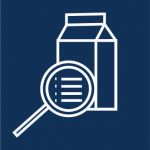Welcome to the 2nd Best-ReMaP Newsletter
October | 2021
Welcome to the second newsletter of the Best-ReMaP (2020-2023), a Europe-wide Joint Action that seeks to contribute to an improved quality of food supplied to citizens of Europe by facilitating the exchange and testing of good practices.
In this newsletter, we give you an insight into the upcoming Conference on Policy Solutions for Childhood Obesity that will be held in Ljubljana, Slovenia – and online – on 17-18 November. In 2021, Slovenia holds its second Presidency of the Council of the European Union and the conference will be an accompanying event of the Presidency. Below you can read about Slovenia’s presidency programme and of course we will give you a taste of the conference content. We also have some fascinating interviews with Best-ReMaP project leaders who will be speaking at the conference, asking them about what their work means to Europeans.
Best-ReMaP Communications Team

Albert Aszalos

Reka Kovacs

Špela Fistrič

Eva Csecsodi
STOP and Best-ReMaP Joint Conference on Policy Solutions for Childhood Obesity
An accompanying event of the Slovenian Presidency of the Council of the European Union 2021
Date: 17th and 18th of November 2021
Venue: Grand Hotel Union, Miklošičeva cesta 1, 1000 Ljubljana, Slovenia
Register here to participate online: https://anketa.nijz.si/a/127619
Conference webpage: https://bestremap.eu/conference-on-policy-solutions-for-childhood-obesity/
 In 2021, Slovenia holds its second Presidency of the Council of the European Union and celebrates the 30th anniversary of its independence. Slovenia’s six-month presidency programme is based on four priorities under the slogan “Together. Resilient. Europe.”. The Presidency focuses on facilitating the EU’s recovery and reinforcing its resilience, reflecting on the future of Europe, strengthening the rule of law and European values, and increasing security and stability in the European neighbourhood.
In 2021, Slovenia holds its second Presidency of the Council of the European Union and celebrates the 30th anniversary of its independence. Slovenia’s six-month presidency programme is based on four priorities under the slogan “Together. Resilient. Europe.”. The Presidency focuses on facilitating the EU’s recovery and reinforcing its resilience, reflecting on the future of Europe, strengthening the rule of law and European values, and increasing security and stability in the European neighbourhood.
The current large-scale health emergency due to the COVID-19 pandemic affects all member states, and requires a collective response at the EU level. That is why Slovenia has highlighted strengthening the resilience of the European Union as one of its main priorities, focusing in the health area in particular on building a European Health Union.
The global rise in childhood obesity is a serious, long-term public health challenge. The public health response to mitigate the spread of COVID-19 pandemic has exacerbated several risk factors for childhood obesity. Lockdowns and social distancing measures have increased children’s exposure to obesogenic environments and disrupted their participation in health promoting activities.
A Slovenian Presidency conference – Science and policy together to tackle childhood obesity – provide the latest insights into the results of two European projects – STOP and Best-ReMaP – on reducing paediatric obesity. The high-level event on food policy will be organised in Ljubljana, Slovenia and online.
The conference links two projects, the Science & Technology in childhood Obesity Policy (STOP) Horizon 2020 research project, and the Joint Action on Best Practices in Nutrition (JA Best-ReMaP), both aiming at the reduction of obesity rates with special focus on children and adolescents. The conference of the two projects will be organized as a joint high-level event, based on the idea to facilitate the translation of research knowledge into policy implementation.
The joint conference – building on the synergies of the two projects – will contribute to the recommendations addressed to national authorities and the European Commission for future policy actions to effectively decrease the prevalence of childhood obesity.
Best-ReMaP project leaders share their recent achievements and explain why their work is important to the citizens of Europe

Work Package 4: Nutrition Policies
Marco Silano, Istituto Superiore di Sanità (Italy)
Best-ReMaP Communications Team (CT): If you were to meet three EC representatives at the airport in Brussels, what are the three most important things you would share with them about the goals of Best-ReMaP?
Marco: I would share the following goals with them:
- The implementation of the best practices on reformulation, advertising and public procurement into EU policies.
- The involvement of stakeholders at EU levels.
- The long-standing actions to make healthy food accessible to all European children.
CT: What are you most proud of Work Package 4’s achievements in recent months?
Marco: The discussion with experts about the implementation of nutritional policies into the European Union.

Work Package 5: Processed Food Monitoring and Reformulation
Karine Vin, French Agency for Food, Environmental and Occupational Health & Safety (ANSES)
Best-ReMaP Communications Team (CT): If you were to go grocery shopping with an ordinary family, how would you explain to them why Work Package 5’s work is important and how it will help to improve the quality of the food offer?
Karine: The major aim of Work Package 5 is to implement a monitoring tool in order to be able to follow the quality of the food offer. The method consists of collecting the information (as ingredient lists and nutritional values) indicated on the packaging of food products that are sold in supermarkets. The objectives of such a tool are:
- To describe the food offer (e.g. “Are there more chocolate breakfast cereals than high fiber cereals in France?”);
- To monitor the nutritional quality of food over time (e.g. answer questions such as “Has the sugar content of soft drinks decreased in the past few years?);
- To allow comparisons between products and countries and the identification of “best in class” products (e.g. if a product is sold in different countries, is the sugar content the same in all countries?);
- To create a virtuous circle among food producers by encouraging them to revise their formulation and improve the nutritional content of their products;
- To help authorities to define public health policies and monitor their impact.
CT: What are you most proud of Work Package 5’s achievements in recent months?
Karine: So far Work Package 5 has achieved to set the base of a European database on food composition at the branded level. Five priority food groups have been identified on the basis of their contribution to the intake of sugar, fat, saturated fat or salt for children, taking into account the consumption habits of 18 European countries. The first data collections have also been launched for the 5 priority food groups (breakfast cereals, bread products, delicatessen meats and similar, fresh dairy products and desserts and soft drinks) in 5 countries which have never implemented such a tool. For that purpose, guidelines have been written and circulated, a specific training has been organized and assistance is provided to the participating countries for the organization and the implementation of the task.

Work Package 6: Reducing the marketing of unhealthy foods to children
Margarida Bica, Ministry of Health (Portugal)
Best-ReMaP Communications Team (CT): If you were invited to a parents’ meeting in a school, why would you say it is important to limit the advertising of unhealthy foods to children? What effect do they have on children and how is Work Package 6 trying to protect them from this?
Margarida: The evidence suggests that unhealthy food and beverage marketing directed at children increases their dietary intake and has a negative impact on children’s preferences for food and beverages high in energy and with poor nutritional value. At last, unhealthy food marketing may impact children’s weight and diet-related health outcomes. Despite the ubiquitous evidence, children are constantly exposed to marketing, even being particularly vulnerable to its effects. The Internet and the current digital marketing ecosystem enable immersive, interactive, and integrated marketing strategies. Besides the growing investment in digital marketing, companies continue to employ more traditional strategies to promote unhealthy food to children, such as advertising through television, radio, print and billboards, sponsorship arrangements, point-of-sale advertising, and packaging design.
Therefore, Governments must take action to limit the marketing of unhealthy foods aimed at children and adolescents. In this regard, WP6’s primary purpose is to support Member-States in such action by developing tools and guidelines on the different stages of the development and implementation of measures. Among these, there is the clear identification of foods that are not permitted to be marketed to children, the development of guidance for the implementation of measures to restrict children’s exposure to unhealthy food marketing and the harmonisation of the methodologies to monitor the compliance of the measures.
CT: What are you most proud of Work Package 6’s achievements in recent months?
Margarida: In the first year of the Joint Action, Work Package 6’s most significant achievements were the update of the mapping of the existing regulation and legislation in Europe and the development of a roadmap for the definition of an EU coordinated nutrient profile model. The mapping exercise included the development of a Questionnaire on legislation and regulation in place and on the Audio-Visual Media Services Directive’s transposition, which was a joint initiative between the Best-ReMaP Joint Action and the WHO European Action Network on Reducing Marketing Pressure on Children. This Questionnaire contributed to the understanding of Europe’s current status regarding restrictions of unhealthy food marketing to children, the main difficulties Member-States face when implementing measures to restrict unhealthy food marketing, as well as the determinants for success.
Restricting and regulating food marketing to children is indeed a challenging area, and the exchange of experiences between Member-States within WP6 is an invaluable contribution to overcome barriers. In these months, the partners’ involvement and active participation as well as the closed collaboration with the WHO NCD Office, JRC, and OECD were determinant for the success and progress of the WP6.

Work Package 7: Procurement of nutritious food in public institutions
Natalija Rozman and Mojca Gabrijelčič Blenkuš, National Institute of Publich Health (Slovenia)
Best-ReMaP Communications Team (CT): If you were to meet the entire staff of a school kitchen, how would you explain to them why Work Package 7’s work is important and how it will change the food they prepare for children?
Natalija and Mojca: Food public procurement relates to both the purchasing of (raw) food and the contracting out of catering services fully or partially by public bodies. It applies to different public settings as for an example schools that have important impact on children’s food behaviour and on the development of childhood obesity. Within those impacts a kitchen staff present and have a key role on how to purchase healthy and high-quality food, to receive the delivered food safely and to prepare it in a way that it is nutritious, of good quality and healthy for children. Exactly this (healthy, nutritious and quality food) is also the main goal of Work Package 7 as part of the Best-ReMaP project. Public procurement of food(s) is successful when the process of it is also fully understood and known to all individuals, who are involved in the procurement process. Within that, the understanding, knowledge and skills for accurate food procurement are key. Work package 7 will enable better choice of quality food products for balanced menus in the school area
CT: What are you most proud of Work Package 7’s achievements in recent months?
Natalija and Mojca: Work Package 7 activities so far were focused on scoping of current existing EU and national legislation related to public procurements of foods in the participating Member States. Within that, an important detailed insights of the public food procurement(s) processes were described by the partnering institutions from eight member states. It is evident that some Member States already have a well-developed public food procurement process, but there are still places for improvement. On the other hand, some Member States have less well-defined public procurement processes for food, which is reflected in challenges in the implementation of food procurement for various public institutions. We have also identified quite a few good practices and processes that can help improve and add to the more harmonized implementation of the food procurement in public setting all around the EU. From the situation analysis and synthesis conclusions, we obtained common points/challenges to be addressed in the next two years of Best-ReMaP, such as: the cost of the procured foods is the main criteria in public food procurement at present; substantial amount of work to prepare tender documents and difficulties with specifying precisely the procured foods; the public tender without exemptions and too demanding documentation for local food providers. Based on the analysis, we have identified a number of possible solutions to improve public food procurement (e.g. following dietary guidelines as an unconditional requirement in public food procurement in addition to procurement criteria; raising awareness of the relevant authorities to enhance the standards of the procured foods, inclusion of more quality criteria as the selective parameters). Most of all, we are proud of an excellent WP7 team with ten EU member states representatives, with increased knowledge capacities and also the links established among public health institutions and procurement officers in the member states.
We’re on social media
To stay up to date with the latest developments of the Best-ReMaP project and to get interesting information about what’s happening on the nutrition front in the EU, sign up for our newsletters and follow our social media channels.

The content of this website represents the views of the author only and is his/her sole responsibility; it cannot be considered to reflect the views of the European Commission and/or the European Health and Digital Executive Agency (HaDEA) or any other body of the European Union. The European Commission and the Agency do not accept any responsibility for use that may be made of the information it contains.
